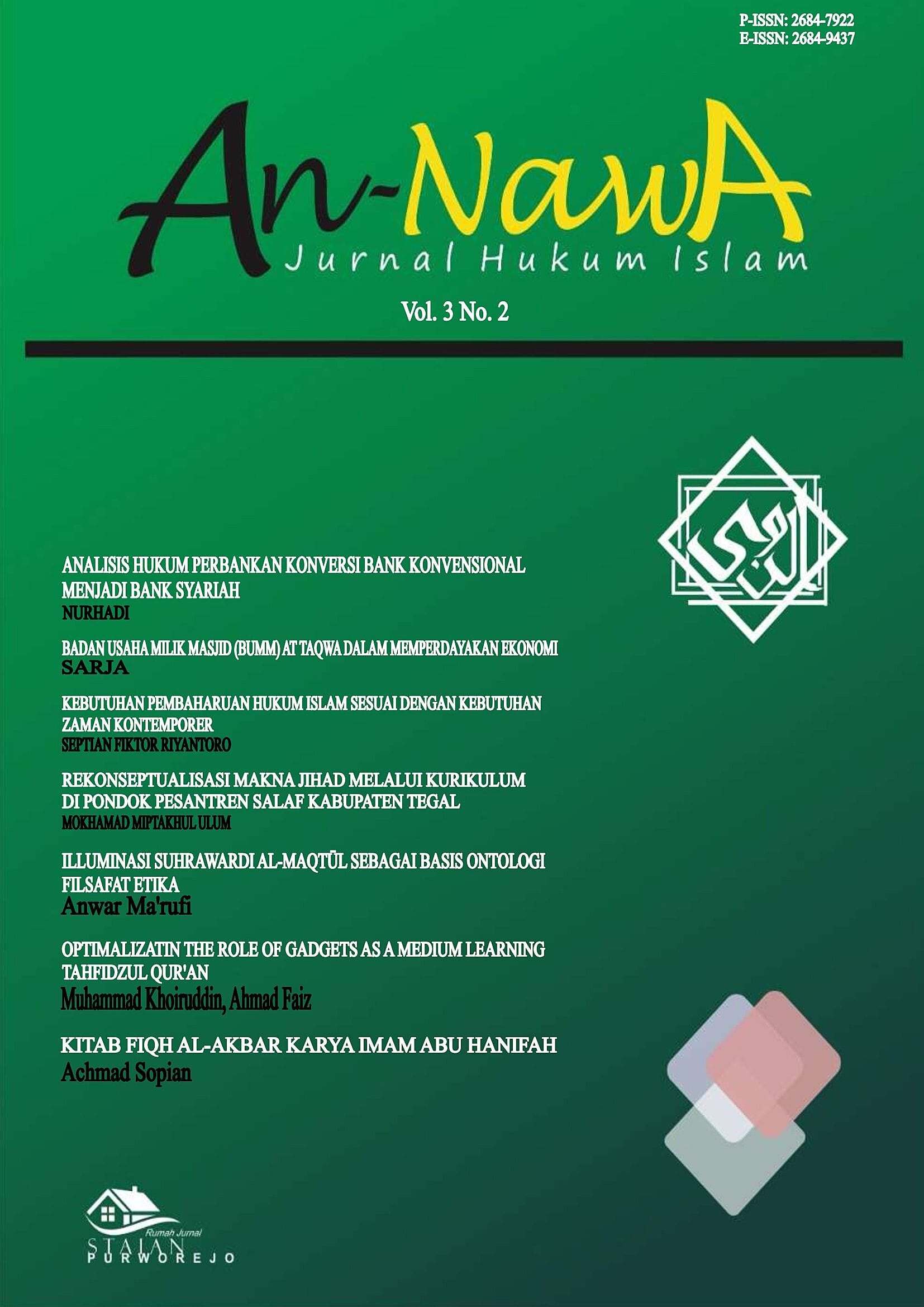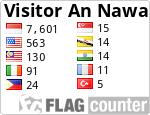Badan Usaha Milik Masjid (Bumm) At Taqwa Dalam Memperdayakan Ekonomi
Abstract
The development of mosques in the current era has economic potential if the management of infaq funds, alms funds, waqf funds from muzakki must be carried out by professional mosque administrators and have strategies in raising funds to be used as economic empowerment of Muslims in particular. The funds owned by the mosque are then used as business capital so as to form a Mosque-Owned Enterprise (BUMM) At Taqwa for productive businesses as well as for the welfare of the mosque itself and the community so that the formulation of the research problem is how to explore the potential that exists in the mosque so that the mosque and the congregation will develop in the economic field. This type of research is a qualitative research with a descriptive approach. Sources of data in this study include primary sources, namely interviews with mosque administrators, mosque youth, and worshipers. and secondary sources in the form of documentation related to mosque activities. The results in this study indicate that the At Taqwa mosque in Tanjungsari Village, Wanasari District, has an independent economic source from the results of funds and waqf of worshipers and muzakki so that it is managed by building a mosque-owned business entity (BUMM), namely cooperatives, renting tarubs, waqf of rice fields, and once a year open a gebyar ramadah or ramadhan market in the courtyard of the mosque this business has been running since 2017 and is supported by many productive waqf assets supported by very good, professional, and transparent management. It is proven that many activities have been carried out and have had a good effect on the congregation, and can improve economic welfare in Tanjungsari Village.
References
Ali, Z. M. (2008). Dasar-Dasar Manajemen. Riau: Suska Pres.
Amin, M. (n.d.). Aktualisasi Fungsi dan Peran Masjid, Al-Markaz: Pencerahan Spiritual dan Pencerdasan Intelektual. Merekonstruksi Fungsi Masjid, (1).
Ayub, M. E., & Dkk. (2005). Manajemen Masjid. Jakarta: Gema Insani.
Harahap, S. (1993). Manajemen Masjid. Yogyakarta: Dana Bhakti Prima Yasa.
Hariandja, M. T. E. (2007). Manajemen Sumber Daya Manusia. Jakarta: Gramedia Widiasarana Indonesia.
Kahf, M. (2014). Islamic Economics: The Charitable Sector. Qatar: Ad Dawhah.
Karim, A. (2013). Ekonomi Makro Islami. Jakarta: Rajawali Press.
Lambton, A. (1997). Awqāf in Persia: 6th-8th/12th-14th Centuries. Islamic Law and Society, 4(3).
Ma’arif, A. S. (2016). Optimalisasi Infaq Masjid untuk Pendampingan Pemberdayaan Keluarga Berbasis Masjid di Kecamatan Donomulyo Kabupaten Malang. Syaikhuna: Jurnal Pendidikan dan Pranata Islam, 7(2), 173–201.
Munir, M., & Ilahi, W. (2006). No Title. Jakarta: Kencana.
Mustofa, B. (2007). Manajemen Masjid. Surakarta: Ziyad Visi Media.
Nasution, E. (2008). Peran Badan Wakaf Indonesia (BWI) dalam Pengembangan Wakaf di Indonesia. al-Awqaf, 1(1).
Pesantrenvirtual. (2014). Peran Masjid Dalam Edukasi Ekonomi Syariah. Diambil 16 Maret 2021, dari pesantrenvirtual.com website: https://www.pesantrenvirtual.com/peran-masjid-dalam-edukasi-ekonomi-syariah/
Said, N. M. (2016). Manajemen Masjid (Studi Pengelolaan Masjid Agung Al-Azhar Jakarta). Jurnal Dakwah Tabligh, 17(1), 94–105.
Sarwat, A. (2012). Fiqh Kehidupan. In 12. Jakarta: Rumah Fiqh Publising.
Simamora, H. (1995). Manajemen Sumber Daya Manusia. Yogyakarta: STIE YKPN.
Suherman, E. (2012). Manajemen Masjid. Bandung: Alfabeta.
Suryanto, A., & Saepulloh, A. (2016). Optimalisasi Fungsi dan Potensi Masjid: Model Pemberdayaan Ekonomi Masyarakat Berbasis Masjid di Kota Tasikmalaya. Iqtishoduna: Jurnal Ekonomi Islam, 5(2), 1–27.
Syahruddin, H. (2017). Dasar-Dasar Manajemen. Jakarta: Ghalia Indonesia.
Yani, A. (2009). Paduan Memakmurkan Mesjid (1 ed.). Jakarta: Al-Qalam Kelompok Gema Insani.












